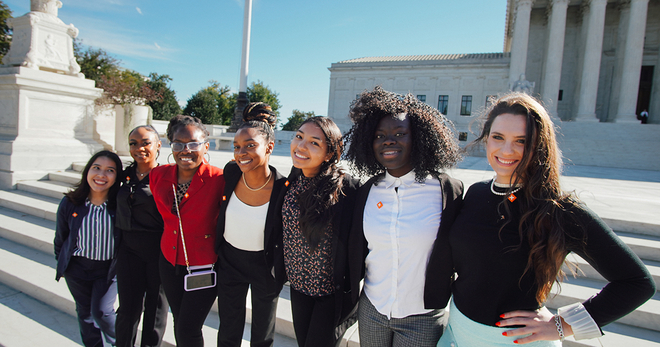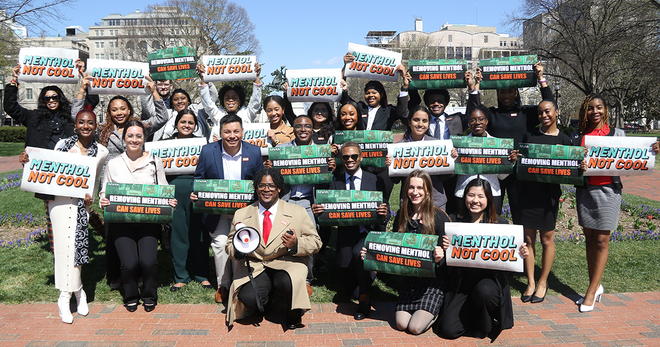truth campaign focused on mental health significantly lowered e-cigarette use among young people
A truth campaign focused on the connection between vaping nicotine and mental health significantly reduced e-cigarette use, according to a new study published in Tobacco Control that is the first to prove the efficacy of a national public education and prevention campaign in countering the youth e-cigarette crisis. The new study finds that exposure to the campaign also lowered odds of current e-cigarette use among young people, demonstrating that messaging about issues important to young people – in this case mental health – works to prevent them from vaping nicotine, building on a trove of research on the effectiveness of smoking prevention mass media campaigns.
Campaign linked to lower e-cigarette use, intention to vape
After research showed that mental health is a top concern among young people, truth launched a fake new e-cigarette marketed as “Depression Stick” to expose nicotine’s adverse connections to mental health and highlight nicotine’s potential to amplify feelings of anxiety and depression. Researchers surveyed more than 18,000 young people between the ages of 15-24 between September 2021 and October 2022 to evaluate the campaign’s impact. Researchers asked how often respondents had seen truth ads focusing on mental health, then averaged responses for a measure of weekly ad awareness. Respondents were also asked about their current e-cigarette use and intentions to use e-cigarette products in the next year.
The study is the first to find an association between exposure to a vaping prevention campaign and lower e-cigarette use among its intended audience of young people. Researchers found that in weeks with greater ad awareness, e-cigarette use and intention to vape was lower. When weekly campaign awareness was high (above 65%), young people had significantly lower intentions to use e-cigarettes in the future. In addition, as campaign awareness increased, the odds of current e-cigarette use among young people decreased significantly. Weeks with campaign awareness above 65% had between 14%-18% lower odds of current e-cigarette use when compared to weeks with campaign awareness lower than 65%, providing evidence that increased awareness of these ad campaigns is key to reducing e-cigarette use. During the study, most weeks (77%) showed between 65% and 75% weekly campaign awareness.
Using findings from the paper, researchers estimate that 3% fewer young people reported vaping in the past month during weeks when campaign awareness was above 65% compared to weeks when awareness was below 65% (26% vs 29%). Researchers multiplied this 3% difference by the population of 15- to 24-year-olds according to the U.S. Census to determine that the campaign has prevented 1.3 million young people from starting to vape in just over a year between September 2021 to October 2022, slowed progression among those who do, and promoted quitting.
truth campaigns effective for e-cigarette and smoking prevention
Mass media campaigns have been highly effective in reducing youth smoking use over the years. truth has prevented millions of young people from becoming smokers, including 2.5 million between 2015 and 2018 alone. Today, e-cigarettes are the most popular tobacco product used by young people – over 2.5 million middle and high school students were currently using e-cigarettes in 2022. A growing body of research indicates that truth campaigns to prevent young people from vaping are poised to move in the same direction as the organization’s successful smoking prevention campaigns.
Past Truth Initiative research has found that young people with strong truth brand awareness and loyalty had significantly lower odds of vaping and intending to vape a year and half later. Our prior vaping prevention campaigns shifted e-cigarette knowledge and beliefs: young people who had seen truth vaping prevention campaigns were more likely to have accurate e-cigarette knowledge, believe that e-cigarettes were harmful and socially unacceptable, and hold anti-tobacco industry attitudes compared to those unaware of the campaign, according to past published research. The new study is the first to establish a direct link between exposure to a national vaping prevention campaign by truth and significantly lower e-cigarette use as well as lower intentions to vape among young people.
Connecting with young people
This study provides crucial evidence that mass-media campaigns are effective tools for reducing e-cigarette use among young people. “Mass media campaigns can be effective in reducing the likelihood of e-cigarette use among youth and young adults, particularly by messaging about themes that are relevant to this audience,” the authors write.
Young people are being faced with two colliding crises – mental health and vaping – that are linked in ways that many people do not realize. Research shows that nicotine can worsen symptoms of depression and anxiety, a fact that the latest truth campaign worked to get to young people. Perhaps more concerning, young people are also unaware of the ways the tobacco industry has leveraged connections between mental health and nicotine to sell e-cigarettes. The tobacco industry took the COVID-19 pandemic as an opportunity to market vaping nicotine as stress relief, even though nicotine use does not alleviate stress in the long-term and instead can trap users in a cycle of nicotine addiction.
Millions of young people continue to use e-cigarettes, a behavior that can worsen mental health. Findings of this study hold significant implications for public health initiatives seeking to discourage e-cigarette use among young people and promote healthier behaviors.
More in tobacco prevention efforts
Want support quitting? Join EX Program
By clicking JOIN, you agree to the Terms, Text Message Terms and Privacy Policy.
Msg&Data rates may apply; msgs are automated.



